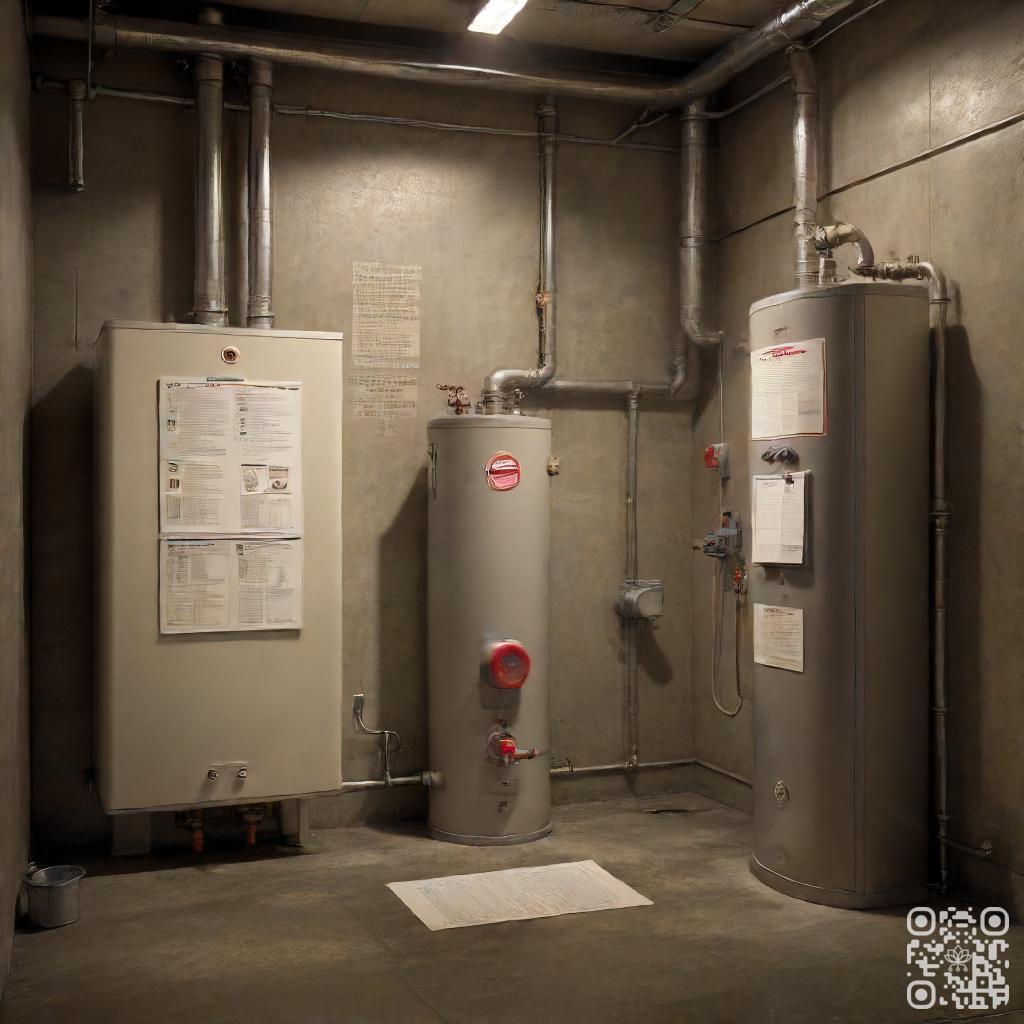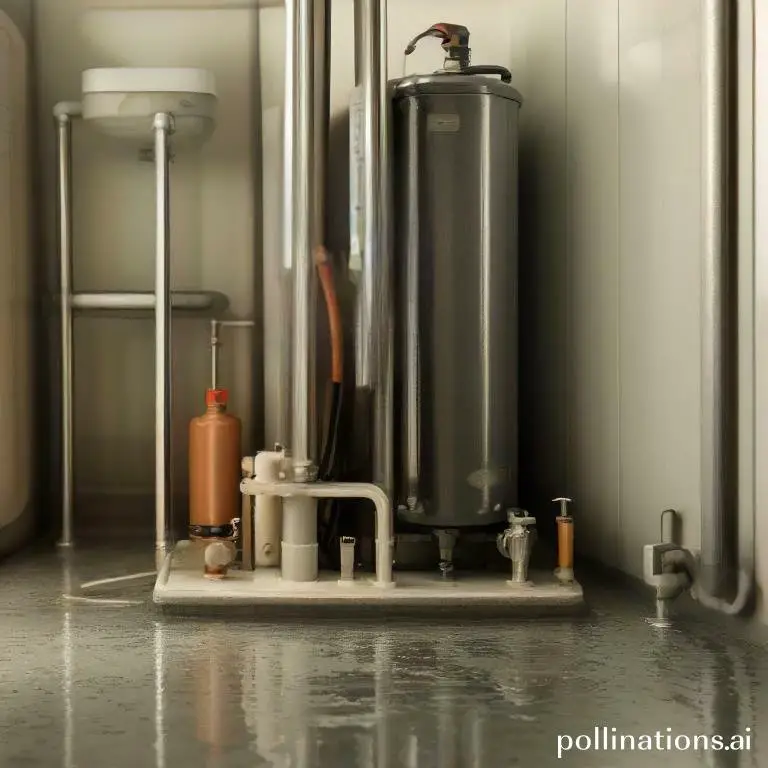
II. Signs of successful water heater flushing include improved water quality, increased efficiency, and extended lifespan of the unit.
III. Proper flushing techniques, such as turning off the power supply, draining the tank completely, and flushing out sediment buildup, can help homeowners avoid costly repairs and replacements in the future.
In order to ensure the longevity and efficiency of your water heater, regular flushing is essential. Signs that indicate the need for a water heater flushing include decreased water temperature, rusty or discolored water, and a foul odor coming from the tap.
Flushing your water heater can remove sediment buildup, improve water quality, and prevent costly repairs. By confronting these signs promptly, you can maintain a reliable and efficient water heating system for your home.
Signs that your water heater needs flushing
Rusty or discolored water
If you notice that the water coming out of your faucets is rusty or discolored, it may be a sign that your water heater needs flushing. Over time, sediment and minerals can build up in the tank, causing the water to become discolored. Flushing the water heater can help remove these deposits and improve the quality of your water.
Strange noises
Another indication that your water heater may need flushing is if you hear strange noises coming from it. These noises could be a result of sediment buildup, which can cause the water heater to work harder and become less efficient. Flushing the water heater can help eliminate these noises and restore its proper functioning.
Decreased water pressure
If you’ve noticed a decrease in water pressure in your home, your water heater could be to blame. Sediment and mineral deposits can accumulate in the tank and clog the water lines, leading to reduced water pressure. Flushing the water heater can help clear these blockages and restore optimal water flow.
Foul odor
A foul odor coming from your hot water taps is a clear sign that your water heater needs flushing. Over time, bacteria can grow in the tank and produce a rotten egg-like smell. Flushing the water heater can help eliminate these bacteria and improve the smell of your hot water.
Leaks or puddles around the water heater
If you notice any leaks or puddles around your water heater, it’s a sign of a potential problem. Sediment buildup can cause the tank to corrode and develop leaks. Flushing the water heater can help prevent further damage and prolong its lifespan.
| Signs | Possible Cause | Solution |
|---|---|---|
| Rusty or discolored water | Sediment buildup | Flush the water heater |
| Strange noises | Sediment buildup | Flush the water heater |
| Decreased water pressure | Sediment buildup | Flush the water heater |
| Foul odor | Bacterial growth | Flush the water heater |
| Leaks or puddles around the water heater | Corrosion due to sediment buildup | Flush the water heater |
Flushing your water heater regularly can help prevent these issues and ensure that it continues to function efficiently. If you’re unsure about how to flush your water heater, it’s best to consult a professional plumber for assistance.
How often should you flush your water heater?
Flushing your water heater regularly is essential to maintain its efficiency and prolong its lifespan. By removing sediment and mineral buildup, you can ensure that your water heater functions optimally. Below are different factors to consider when determining how often you should flush your water heater:
1. Manufacturer’s recommendations
The manufacturer of your water heater will typically provide guidelines on how often you should flush it. These recommendations may vary depending on the specific model and type of water heater you have. Imperative to consult the manufacturer’s instructions or website for the recommended flushing frequency.
2. Frequency based on water hardness
The hardness of your water can impact the rate at which sediment and mineral buildup occurs. If you have hard water, which contains high levels of minerals such as calcium and magnesium, it is advisable to flush your water heater more frequently. Flushing every six months or annually can help prevent excessive buildup and maintain efficient heating.
3. Frequency based on usage
The frequency of water heater flushing can also depend on your household’s water usage. If you have a large family or use hot water extensively, more sediment and mineral buildup may occur. In such cases, flushing your water heater every six months can help prevent clogs and maintain optimal performance.
Regular water heater flushing not only improves efficiency but also helps prevent potential issues such as reduced hot water supply, increased energy consumption, and the risk of leaks. It is recommended to schedule a professional inspection and flushing at least once a year, even if you have a new or recently serviced water heater.
Steps to Flush Your Water Heater
Flushing your water heater is an essential maintenance task that helps to prolong its lifespan and ensure efficient performance. Follow these steps to properly flush your water heater:
1. Turn off the Power/Gas Supply
Before starting the flushing process, indispensable to turn off the power or gas supply to your water heater. This will prevent any accidents or injuries during the procedure.
2. Shut off the Cold Water Supply
Locate the cold water supply valve connected to your water heater and turn it off. This will stop the flow of water into the tank and allow you to drain it properly.
3. Drain the Tank
Attach a garden hose to the drain valve located at the bottom of the water heater. Place the other end of the hose in a suitable drainage area, such as a floor drain or bucket. Open the drain valve to allow the water to flow out of the tank. Be cautious as the water may be hot.
4. Flush the Tank
With the drain valve open, turn on the cold water supply for a few minutes. This will help to flush out any sediment or mineral buildup inside the tank. The rushing water will carry away the debris through the open drain valve.
5. Refill and Restart the Water Heater
Once the tank is flushed, close the drain valve and disconnect the garden hose. Turn on the cold water supply to refill the tank. Make sure to open a hot water faucet in your home to allow any air to escape from the system. Finally, turn on the power or gas supply to restart the water heater.

Tools needed for water heater flushing
Garden hose
In regard to flushing your water heater, a garden hose is an essential tool. It allows you to safely drain the water from the tank without causing any damage.
Bucket
Having a bucket on hand is important during the flushing process. It helps to collect the water that is being drained from the tank, making it easier to dispose of properly.
Gloves
Protecting your hands is crucial when working with hot water and potentially harmful chemicals. Wearing gloves will ensure your safety and prevent any accidental burns.
Safety goggles
Flushing a water heater involves dealing with pressurized water and the possibility of splashing. Safety goggles provide eye protection and prevent any accidents or injuries.
| Tool | Usage |
|---|---|
| Garden hose | To safely drain water from the tank |
| Bucket | To collect the drained water |
| Gloves | To protect hands from hot water and chemicals |
| Safety goggles | To prevent eye injuries from splashing water |

Benefits of Regular Water Heater Flushing
Improved Efficiency and Performance
Flushing your water heater regularly can significantly improve its efficiency and performance. Over time, mineral deposits and sediment can accumulate in the tank, causing it to work harder to heat the water. By flushing out these deposits, you allow the heater to operate at its full potential, ensuring that it heats water quickly and effectively.
Extended Lifespan
Regular flushing of your water heater can help extend its lifespan. When mineral deposits build up inside the tank, they can corrode the heating elements and other components, leading to premature wear and tear. Flushing the heater regularly removes these deposits, preventing corrosion and prolonging the life of your water heater.
Reduced Energy Bills
One of the significant benefits of flushing your water heater is that it can help reduce your energy bills. When mineral deposits accumulate, they create a layer of insulation between the heating elements and the water, making it harder for the heater to transfer heat efficiently. Flushing the heater removes this insulation, allowing it to operate more efficiently and reducing energy consumption.
Clean and Safe Water Supply
Regular flushing ensures that your water heater provides clean and safe water supply. Over time, sediment and bacteria can accumulate in the tank, affecting the quality of the water. Flushing the heater helps remove these impurities, ensuring that the water coming out of your taps is clean and safe for use.
To provide you with a visual representation of the benefits of regular water heater flushing, here is an informative table:
| Benefit | Description |
|---|---|
| Improved Efficiency and Performance | Flushing removes mineral deposits and sediment, allowing the heater to operate at its full potential. |
| Extended Lifespan | Flushing prevents corrosion and premature wear and tear, prolonging the life of the water heater. |
| Reduced Energy Bills | Flushing enhances energy efficiency by removing insulation caused by mineral deposits. |
| Clean and Safe Water Supply | Flushing eliminates sediment and bacteria, ensuring the water supply is clean and safe. |
Bottom Line
Regular water heater flushing is crucial to ensure its longevity and efficiency. Signs of successful water heater flushing include clear and odorless water, improved water pressure, and reduced energy bills. Nevertheless, if you notice any signs of sediment buildup or rust, it’s time to call a professional plumber to flush your water heater. Neglecting regular flushing can lead to costly repairs or even replacement of the entire unit. So, make sure to schedule a water heater flushing at least once a year to keep it running smoothly and efficiently for years to come.
Read More:
1. Diy Flushing Vs. Professional Water Heater Service
2. What Temperature Should I Set Before Flushing?











